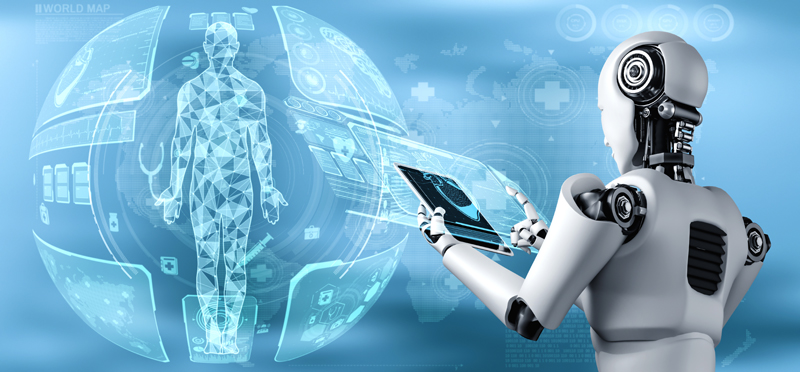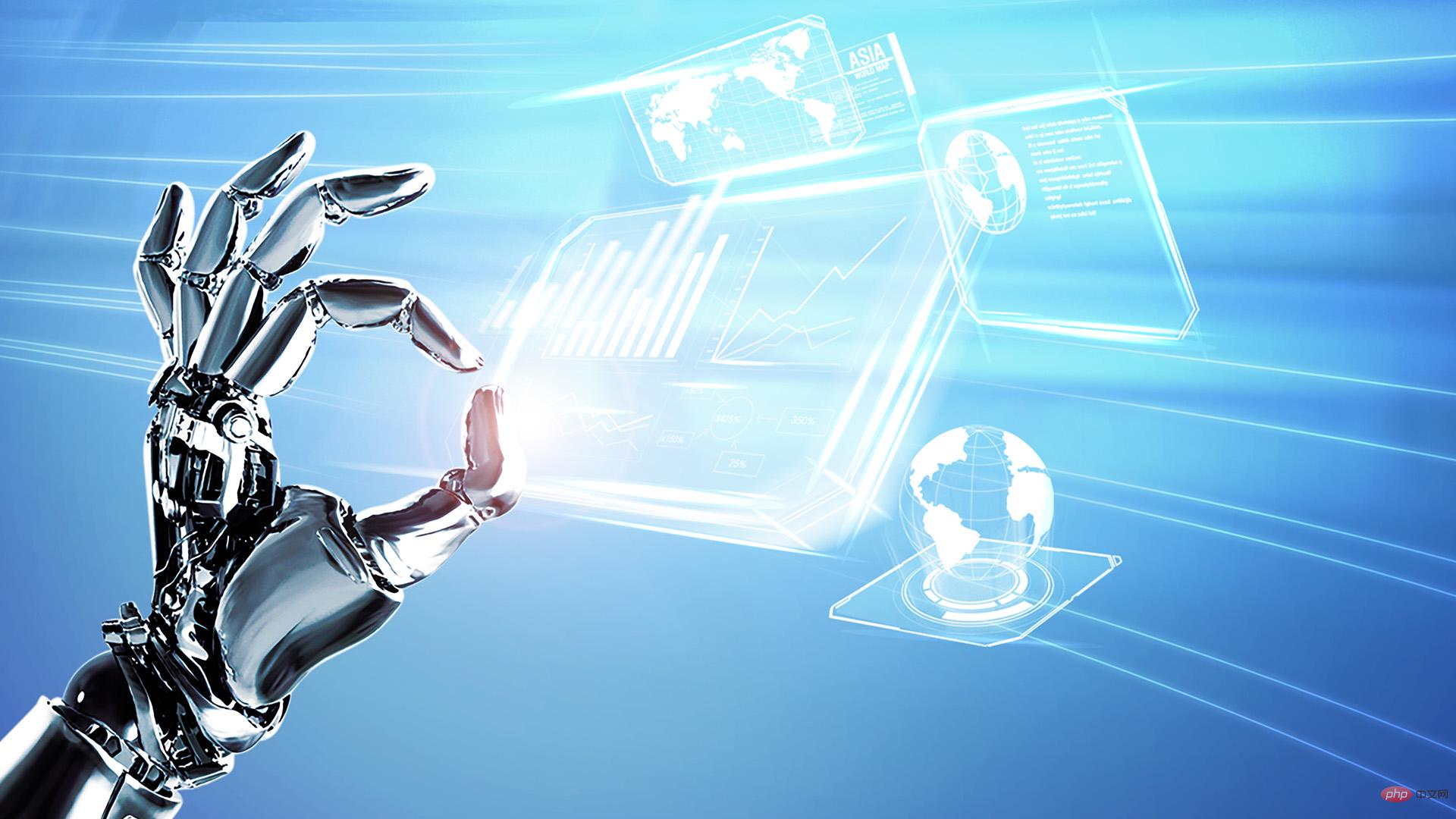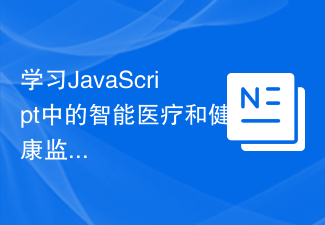With the emergence of the Internet, all walks of life have begun to embrace the Internet, and now with the emergence of AI, the same is true. For the medical industry, what role can the help of AI bring to the application of the medical industry? Let’s take a look at this analysis.

In the early days of the Internet, all walks of life embraced the Internet; to today's various AI, all walks of life have begun to embrace artificial intelligence again, and the constant is always change; the same is true for the medical industry, the previous online medical care, the Internet Medical care, smart hospitals, and Internet hospitals are connected to the Internet in various forms. Nowadays, various AI applications such as speech recognition, image recognition, intelligent consultation, intelligent diagnosis, and assisted decision-making systems are continuously penetrating into various medical scenarios.
Why do we need to add AI as a friend after adding the Internet? Ultimately, its essence is to reduce costs and increase efficiency, and provide better service experience for participants in the medical industry (not just patients). Whether it is the Internet or AI, combined with medical treatment, it generally has the following purposes:
- Expand the radius of medical services: This is easy to understand, that is, to break through the physical space of medical services, and push forward 30 years before medical care has had its first contact with the Internet. All medical services basically require medical service providers to face Provided by patients; the emergence of the Internet has broken through the limitations of physical space for medical activities such as registration, consultation, prescribing and purchasing medicines;
- Improve the level of medical services: increase service efficiency and quality, and improve service experience;
- Relieve the strain on medical resources;
- Promote the rational allocation of medical resources: scientific and intelligent allocation and dispatch of medical resources.

1. Integration of AI medical treatment
If we want to know how AI can find its use in the medical field, we should first understand what the basic capabilities of AI are. According to the definition of artificial intelligence from the Dartmouth Conference in the United States in 1956: simulating, extending, and expanding human intelligence, allowing machines to perceive, recognize, make decisions, and execute like humans; among which there are four: perception, cognition, decision-making, and execution. Dimensional ability level is one of the ways to judge the level of artificial intelligence today; perhaps perception, cognition, decision-making and execution are relatively abstract. How can these abilities be combined with medical care? Then we will further refine these four abilities. To put it into perspective, with my simple understanding of AI, I can at least have the following capabilities:
- Speech recognition, semantic analysis;
- Image recognition, image processing;
- Machine learning, deep learning;
- Speech synthesis, image synthesis.
We now know the basic capabilities of AI, but how do these capabilities play a role in medical services? Let’s take the process of outpatient treatment and hospitalization as an example. When a patient comes to the hospital, he needs to go through: registration-interview-test-diagnosis-confirmation-fill in medical records-hospitalization-medication-ward rounds-update medical records-test-diagnosis-recovery-discharge-return Home-take medicine-follow-up-re-examination (if you don’t need to be hospitalized, you can directly pay for the medicine and go home).

- When a patient registers online and does not know which department to enroll in, through intelligent consultation, AI extracts text information and associates the medical knowledge map to determine the department;
- When patients consult online, AI extracts text information in the conversation, standardizes medical terminology, automatically generates medical record reports, issues prescriptions, and conducts intelligent review;
- Currently, all physiological sign detection needs to be carried out in medical institutions. If one day a portable bracelet or other wearable device can be used to carry out specific physiological indicator data required for basic diagnosis (and be approved by hospital doctors), Perhaps the miniaturization of medical-grade equipment for home use will bring breakthroughs in online medical care;
- When the patient returns home from treatment, AI intelligently generates a rehabilitation plan and follow-up reminders based on the patient’s medical records and subsequent data monitoring, and can adjust intervention measures in real time based on changes in data. Can this reduce the risk to a certain extent? Physician workload.
Above we have understood the basic capabilities of AI and the basic process of outpatient medical treatment, then the integration of AI capabilities and medical service scenarios (only medical services, medicine, medical insurance, and health insurance are not analyzed here), in the direction of medical services This can at least be reflected in the following aspects:
- Extraction of specific medical information from text;
- Standardization of medical terminology;
- Processing and computing of medical data;
- Generation and review of medical reports or records;
- Recognition and comparison of medical images;
- Intelligent consultation and guidance;
- Detection and prediction of physiological indicators;
- Diagnose based on medical conversation.
The integration of AI and medical care is comprehensive. The above are just examples to illustrate the possible application of AI in the outpatient medical treatment process. With the development and maturity of AI, it is foreseeable that AI will play a greater role in both breadth and depth. the value of.

2. Application of AI medical treatment
Whether it is Internet medical care or AI medical care, the main body is always medical care. We cannot put the cart before the horse. The Internet and AI are only empowerment and blessing, and whether it is the Internet or AI, at least for now, it has not been done. It has subverted medical care, so in the end the scenario of AI being implemented in medical care will probably remain unchanged. AI is like a catalyst to promote medical care in terms of service space, service channels, service processes, service industries, service objects, and business models.

3.Finally
The first thing to do when going to the hospital is testing. Without testing, medicine cannot be prescribed and treatment cannot be performed; patients with chronic diseases also need to frequently monitor physical signs. Without offline medical institutions, accurate and hospital-approved health tests cannot be performed. Without test data, doctors will not be able to provide a series of subsequent medical services. This is also the limitation of today's Internet medical (hospital) online services. Just imagine one day if AI or other technologies can help patients conveniently detect important data at home and be recognized by doctors and hospitals, that would be great!
Just like the nanorobots imagining in "Subverting Medical Care" in the future that swim in human blood vessels, they monitor human body data in real time, and are connected to family doctors or medical institutions on the other end for early detection, early intervention and early treatment. For emergency patients, missing the golden rescue time means death.

For patients, another unavoidable issue with online consultation or online medical services is patient trust. An expert doctor who conducts consultation and communication with patients online may not be as effective as an ordinary doctor offline. Face-to-face consultation with patients is just like although online meetings are very convenient now, many important meetings still and must require offline participants to gather together for meetings. From a service perspective, communication between doctors and patients requires not only Trust also requires temperature. If one day in the future AR/VR or other technologies can realize that there is not much difference between remote communication and actual face-to-face communication, this will eliminate the trust problem of patients and make online medical services more and more warm, that would be great!
Reference reports: "In-depth Research Report on China's Medical AI Industry Chain in 2023", "The Tao and Wisdom of Medical AI Innovation"
Columnist
andy, WeChat public account: PM Dabai, a small veterinarian in the product manager industry, a small veterinarian in the manager industry
This article was originally published on Everyone is a Product Manager. Reprinting without permission is prohibited
The title picture comes from unsplash, based on CC0 protocol
The above is the detailed content of When medicine meets AI. For more information, please follow other related articles on the PHP Chinese website!
 老年医疗保健的加强与远程医疗和老年人口的增长相适应Dec 20, 2023 pm 05:19 PM
老年医疗保健的加强与远程医疗和老年人口的增长相适应Dec 20, 2023 pm 05:19 PM老年人口的不断增加暗示需要健全医疗卫生体系,满足老年人的切身健康需求。鉴于老年是许多可能需要即时帮助的疾病和问题的代名词,因此有效且易于获得的医疗保健解决方案已成为必要。远程医疗弥合了医疗保健和老年人之间的差距,成为一种有效的解决方案,可以方便地提供医疗保健服务。远程医疗通过远程监控提供早期发现,使老年人免于前往另一个地点寻求帮助的不便。因此,这使他们能够更好地管理自己的身心健康状况,提高生活质量。远程医疗:改善老年医疗保健增强医疗保健的可及性:远程医疗最大限度地减少了获得医疗保健的障碍,使老年
 当医疗遇到AISep 04, 2023 pm 04:49 PM
当医疗遇到AISep 04, 2023 pm 04:49 PM互联网的出现,各行各业都开始拥抱互联网,如今AI的出现,又是如此。对于医疗行业而言,AI的助力,能为医疗行业的应用带来什么作用?一起来看看本文分析吧。早期各行各业的互联网+,各种拥抱互联网;到如今的各种AI+,各行各业又开始拥抱人工智能,不变的始终是变化;医疗行业亦是如此,之前的在线医疗、互联网医疗、智慧医院、互联网医院各种形式去与互联网进行连接,现在的语音识别、图像识别、智能问诊、智能诊断,辅助决策系统等各种AI应用又在向医疗的各种场景不断渗入。医疗为什么加完互联网后,又要加AI为好友呢?终其
 2022年人工智能在医疗领域的十大应用场景Apr 09, 2023 pm 12:11 PM
2022年人工智能在医疗领域的十大应用场景Apr 09, 2023 pm 12:11 PM什么是医疗人工智能?医疗人工智能是指人工智能在医疗服务和医疗服务管理或交付中的应用。机器学习、非结构化的大型数据集、高级传感器、自然语言处理和机器人技术都被用于越来越多的医疗部门中。除了广阔的应用前景,人工智能技术也带来了重大的潜在问题——例如可能来自患者数据的集中化和数字化的滥用,以及可能与纳米医学或通用生物识别ID的联系。在一些早期的人工智能应用中,公平和偏见也都是人们关注的问题,但该技术或许也能够提高医疗公平性。尽管人工智能在医疗保健领域的部署才刚刚开始,但它正变得越来越普遍。调研机构Ga
 如何使用JavaScript实现智能医疗和健康服务Jun 15, 2023 pm 10:00 PM
如何使用JavaScript实现智能医疗和健康服务Jun 15, 2023 pm 10:00 PM随着科技的不断进步和人们的生活水平的提高,智能医疗和健康服务已经成为了当前社会关注的一个重要领域。而JavaScript作为一门广泛应用于网页开发和交互式应用程序设计的编程语言,它也可以被应用于智能医疗和健康服务的开发中。本文将介绍如何使用JavaScript实现智能医疗和健康服务。一、JavaScript的应用场景首先,我们需要了解JavaScript在医
 Go语言在智能医疗产业中的应用方向Jun 20, 2023 am 10:06 AM
Go语言在智能医疗产业中的应用方向Jun 20, 2023 am 10:06 AMGo语言是一种开源的编程语言,由谷歌公司于2009年推出。它具有高效、速度快、运行稳定等优点。在智能医疗产业中,Go语言的应用越来越广泛,下面我们来看看Go语言在智能医疗产业中的应用方向。一、医疗智能化医疗智能化是指运用人工智能、大数据、物联网等技术对医疗进行全面升级,实现更高效、更精准、更人性化的医疗服务。而Go语言具有高效、运行稳定的特点,非常适合在医疗
 PHP实现实时医疗诊断技术实现Jun 28, 2023 am 11:36 AM
PHP实现实时医疗诊断技术实现Jun 28, 2023 am 11:36 AM随着人们生活水平的提高和医学技术的不断发展,医疗领域的需求也越来越高。在临床实践中,医生需要及时而准确地诊断病情,以便能够尽早地给患者治疗,并且有效地控制病情的发展。而实时医疗诊断技术的出现,则为临床实践带来了更加便利和高效的可能。实时医疗诊断技术是指将传感器、大数据、人工智能等技术有机结合起来,实现对人体健康数据的精准感知、分析和诊断的过程。此技术的应用前
 学习JavaScript中的智能医疗和健康监测Nov 04, 2023 pm 04:19 PM
学习JavaScript中的智能医疗和健康监测Nov 04, 2023 pm 04:19 PM学习JavaScript中的智能医疗和健康监测随着信息技术的快速发展,智能医疗和健康监测成为了当前医疗领域的热门话题。而JavaScript作为一种广泛应用于web开发的编程语言,在智能医疗和健康监测中也有着重要的作用。本文将介绍JavaScript在智能医疗和健康监测中的应用,并给出具体的代码示例。一、智能医疗智能医疗利用人工智能和大数据技术,将医疗领域复
 PHP中如何进行智能医疗和医疗数据分析?May 21, 2023 am 08:33 AM
PHP中如何进行智能医疗和医疗数据分析?May 21, 2023 am 08:33 AM随着医疗技术的不断发展和医疗数据的海量化,智能医疗和医疗数据分析成为了医疗行业中不可或缺的一部分。PHP作为一种流行的开发语言,在智能医疗和医疗数据分析方面也有着广泛的应用。本文将介绍如何使用PHP进行智能医疗和医疗数据分析。一、智能医疗智能医疗是指通过人工智能技术和大数据分析来提高医疗服务的质量和效率。在智能医疗中,PHP可以用于开发医疗系统、医疗应用和医


Hot AI Tools

Undresser.AI Undress
AI-powered app for creating realistic nude photos

AI Clothes Remover
Online AI tool for removing clothes from photos.

Undress AI Tool
Undress images for free

Clothoff.io
AI clothes remover

AI Hentai Generator
Generate AI Hentai for free.

Hot Article

Hot Tools

MinGW - Minimalist GNU for Windows
This project is in the process of being migrated to osdn.net/projects/mingw, you can continue to follow us there. MinGW: A native Windows port of the GNU Compiler Collection (GCC), freely distributable import libraries and header files for building native Windows applications; includes extensions to the MSVC runtime to support C99 functionality. All MinGW software can run on 64-bit Windows platforms.

DVWA
Damn Vulnerable Web App (DVWA) is a PHP/MySQL web application that is very vulnerable. Its main goals are to be an aid for security professionals to test their skills and tools in a legal environment, to help web developers better understand the process of securing web applications, and to help teachers/students teach/learn in a classroom environment Web application security. The goal of DVWA is to practice some of the most common web vulnerabilities through a simple and straightforward interface, with varying degrees of difficulty. Please note that this software

SecLists
SecLists is the ultimate security tester's companion. It is a collection of various types of lists that are frequently used during security assessments, all in one place. SecLists helps make security testing more efficient and productive by conveniently providing all the lists a security tester might need. List types include usernames, passwords, URLs, fuzzing payloads, sensitive data patterns, web shells, and more. The tester can simply pull this repository onto a new test machine and he will have access to every type of list he needs.

WebStorm Mac version
Useful JavaScript development tools

SublimeText3 Linux new version
SublimeText3 Linux latest version






